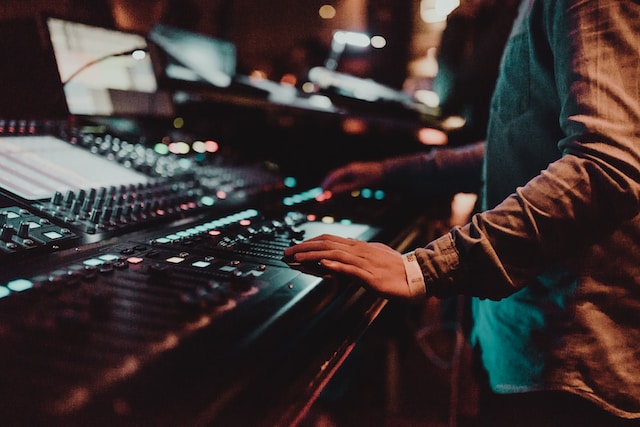Audio Engineering in DaVinci Resolve: Elevating Sound Quality and Mixing Mastery

In the intricate tapestry of filmmaking, audio engineering stands as a crucial pillar, weaving together the sonic elements that breathe life into visuals. The importance of high-quality sound cannot be overstated, as it serves to immerse viewers in the story, evoke emotions, and elevate the overall viewing experience. DaVinci Resolve, known primarily for its prowess in color grading and editing, also boasts a robust set of audio engineering tools designed to enhance sound quality and facilitate professional-grade mixing. In this extensive exploration, we delve into the realm of audio engineering within DaVinci Resolve, uncovering the tools, techniques, and strategies for achieving pristine sound quality and mastering audio mixing.
Introduction to Audio Engineering in DaVinci Resolve
While DaVinci Resolve has long been celebrated for its advanced color grading capabilities, its suite of audio engineering tools often flies under the radar. However, within the software lies a comprehensive set of features tailored to meet the needs of audio professionals and filmmakers alike. From basic audio editing and processing to sophisticated mixing and mastering, DaVinci Resolve provides a robust platform for achieving pristine sound quality and elevating the audio experience of any project.
Understanding the Audio Workflow in DaVinci Resolve
Before delving into the specifics of audio engineering in DaVinci Resolve, it’s essential to grasp the fundamental aspects of the software’s audio workflow. At its core, DaVinci Resolve offers a dedicated Fairlight page, where users can perform a wide range of audio-related tasks, including editing, mixing, processing, and mastering. The Fairlight page provides a familiar interface reminiscent of traditional digital audio workstations (DAWs), complete with tracks, clips, and a range of tools for manipulating audio.
Within the Fairlight page, users can import audio clips, arrange them on tracks, and perform basic editing tasks such as trimming, splitting, and rearranging. Additionally, DaVinci Resolve offers a range of audio effects and processing tools, including EQ, compression, reverb, and noise reduction, allowing users to enhance and manipulate audio with precision and control.
Enhancing Sound Quality with Audio Effects and Processing
One of the primary objectives of audio engineering in DaVinci Resolve is to enhance the sound quality of a project, ensuring clarity, balance, and fidelity throughout. To achieve this goal, users can leverage a variety of audio effects and processing tools to address common issues such as noise, distortion, and uneven levels.
For example, the EQ (equalization) tool allows users to adjust the frequency balance of audio clips, boosting or attenuating specific frequencies to achieve a desired tonal balance. Similarly, the compression tool can be used to control the dynamic range of audio clips, reducing the volume of loud passages while boosting quieter sections, resulting in a more consistent and balanced sound.
In addition to EQ and compression, DaVinci Resolve offers a range of other audio effects and processing tools, including noise reduction, de-essing, and spatial effects such as reverb and delay. By applying these effects strategically, users can enhance the clarity, depth, and spatiality of their audio, resulting in a more immersive and engaging listening experience.
Mastering Audio Mixing: Achieving Balance and Cohesion
In addition to enhancing sound quality, audio engineering in DaVinci Resolve also encompasses the art of audio mixing, where individual audio elements are blended together to create a cohesive and balanced sonic landscape. Mastering the art of audio mixing requires a keen ear, a deep understanding of audio principles, and a mastery of the tools and techniques available within DaVinci Resolve.
One of the key principles of audio mixing is achieving balance between different elements of the audio mix, including dialogue, music, sound effects, and ambient noise. By adjusting the volume, panning, and spatial placement of each element, users can create a sense of depth and dimensionality within the audio mix, drawing listeners into the sonic world of the project.
Another crucial aspect of audio mixing is ensuring clarity and intelligibility of dialogue, which is often the focal point of the audio mix in film and television projects. Through careful EQ, compression, and dynamic processing, users can enhance the clarity and presence of dialogue, ensuring that it remains clear and intelligible even in noisy or complex audio environments.
Conclusion: Elevating Sound Quality with DaVinci Resolve
In conclusion, audio engineering in DaVinci Resolve offers filmmakers, editors, and audio professionals a powerful toolkit for enhancing sound quality and mastering audio mixing. From basic audio editing and processing to sophisticated mixing and mastering, DaVinci Resolve provides a comprehensive platform for achieving pristine sound quality and elevating the audio experience of any project. By mastering the tools and techniques available within DaVinci Resolve, users can unlock the full potential of their audio, ensuring that their projects captivate audiences and immerse viewers in a rich and immersive sonic landscape.




